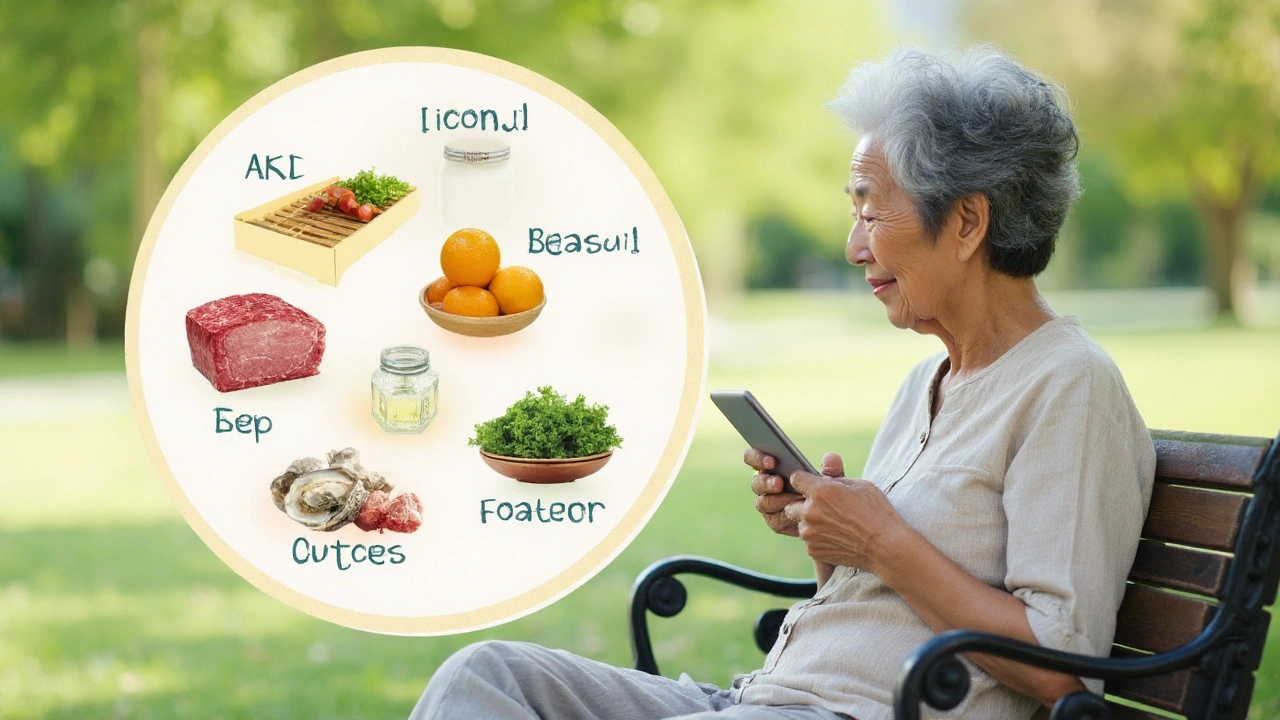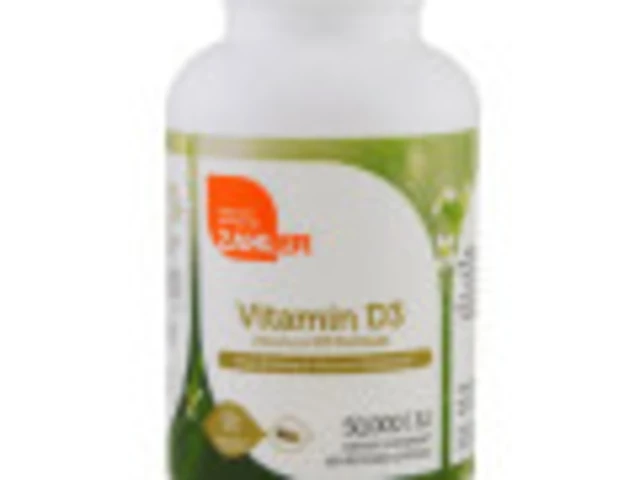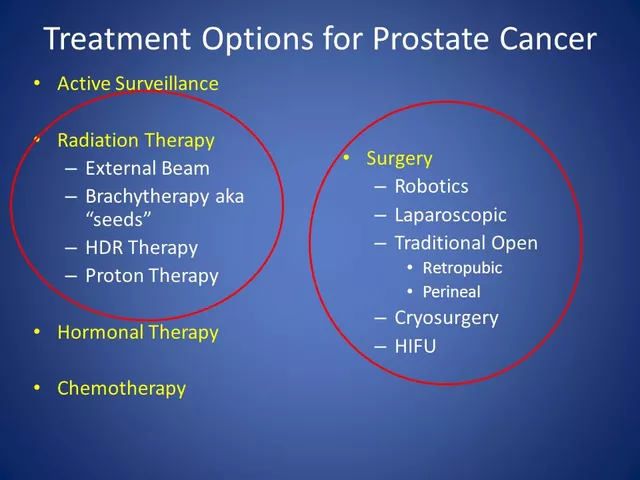Anemia Risk Checker
Anemia is a condition characterized by a reduced number of red blood cells or hemoglobin, leading to diminished oxygen transport. In older adults, anemia isn’t just a lab number-it’s a hidden driver of fatigue, falls, and faster biological aging. When you pair it with Aging the gradual decline of physiological function over time, the two start a vicious loop: nutrient gaps shrink blood‑cell production, low oxygen fuels cellular stress, and the body ages faster.
Why Nutrition Drives Blood Formation
All blood cells stem from hematopoiesis the process by which bone‑marrow stem cells create red cells, white cells, and platelets. This process relies on three key nutrients:
- Iron a mineral essential for hemoglobin synthesis
- Vitamin B12 a water‑soluble vitamin crucial for DNA replication in red‑cell precursors
- Folate another B‑vitamin that partners with B12 in DNA synthesis
When any of these dip, the marrow stalls, and red blood cells the oxygen‑carrying cells that keep muscles and brain fueled drop in number.
Three Nutritional Deficiency Anemias Common in Seniors
| Deficiency | Typical Lab Pattern | Key Symptoms | Top Dietary Sources |
|---|---|---|---|
| Iron‑deficiency anemia low iron leading to microcytic, hypochromic cells | Low hemoglobin, low ferritin, high total iron‑binding capacity | Fatigue, pica, brittle nails | Red meat, lentils, fortified cereals |
| Vitamin B12 deficiency anemia macrocytic anemia with neurological signs | Low B12, elevated methylmalonic acid, macrocytosis | Memory loss, tingling, gait instability | Shellfish, eggs, fortified plant milks |
| Folate‑deficiency anemia macrocytic anemia without neurological impairment | Low serum folate, high homocysteine, macrocytosis | Weakness, shortness of breath, glossitis | Leafy greens, beans, citrus fruits |
Older adults are especially vulnerable because appetite wanes, gastric acid production drops (hurting B12 absorption), and chronic meds like proton‑pump inhibitors interfere with iron uptake.
How Anemia Fuels the Aging Process
When anemia lowers oxygen delivery, every tissue experiences a subtle hypoxia. This triggers oxidative stress an imbalance between free radicals and antioxidant defenses. Oxidative stress, in turn, damages DNA, proteins, and cell membranes-key hallmarks of aging.
The cascade looks like this:
- Reduced hemoglobin the iron‑rich protein that carries oxygen in red blood cells → lower tissue oxygen.
- Cellular hypoxia → increased production of reactive oxygen species.
- Persistent oxidative stress → telomere shortening, inflammation, and loss of muscle mass.
These biological hits manifest as two clinical syndromes that define an aging trajectory:
- Frailty a state of reduced strength, endurance, and physiologic reserve - seniors with anemia are 1.5‑2 times more likely to become frail.
- Cognitive decline deterioration of memory, speed of processing, and executive function - low iron and B12 levels have been linked to faster rates of dementia progression.
In short, anemia accelerates the wear‑and‑tear that we usually attribute to “getting older.”

Practical Nutrition Strategies for Seniors
Stopping the cycle starts in the kitchen. Here are evidence‑backed moves:
- Iron boost: Pair plant‑based iron (lentils, spinach) with vitaminC‑rich foods (bell peppers, kiwi) to improve non‑heme iron absorption.
- B12 safeguard: Include at least two servings of animal‑derived foods per day or use a fortified cereal; for vegans, a weekly B12 supplement (250‑500µg) is recommended.
- Folate focus: Aim for 400µg of dietary folate daily via leafy greens, beans, and orange juice; avoid excessive alcohol, which hinders folate metabolism.
- Overall diet quality: The Mediterranean pattern-rich in fish, nuts, olive oil, and colorful vegetables-has been shown to lower anemia prevalence and improve frailty scores.
Hydration matters too. Dehydration concentrates blood, falsely inflating hemoglobin numbers and masking true anemia.
When to Test and What to Ask Your Doctor
Annual blood work for anyone over 65 should include a complete blood count (CBC) and iron studies. If you see any of these red flags, schedule a visit:
- Persistent fatigue that isn’t explained by activity level. \n
- Unexplained shortness of breath on stairs.
- Frequent falls or new weakness.
- Memory lapses or difficulty concentrating.
Your clinician will likely order:
- CBC with mean corpuscular volume (MCV) - tells if red cells are micro‑ or macro‑cytic.
- Serum ferritin, iron, and transferrin saturation - for iron status.
- Vitamin B12 and folate levels - to pinpoint the deficiency.
- Homocysteine and methylmalonic acid when B12 results are borderline.
If labs confirm a deficiency, treatment usually starts with dietary changes and a short course of oral supplements. In severe cases, intravenous iron or B12 injections may be needed.
Looking Ahead: Research and Emerging Therapies
Scientists are investigating whether correcting anemia can actually reverse aspects of frailty. A 2023 randomized trial in New Zealand showed that a six‑month iron‑rich diet reduced the frailty index by 12% in participants over 70. Parallel work on B12‑laden probiotics is underway, aiming to boost absorption without pills.
While the field is evolving, the message stays simple: keep the blood well‑fed, and the body ages more gracefully.
Frequently Asked Questions
What are the most common causes of anemia in older adults?
The three leading nutritional causes are iron deficiency, vitamin B12 deficiency, and folate deficiency. Chronic diseases, medication effects, and reduced dietary intake also play big roles.
How does anemia accelerate frailty?
Low hemoglobin means muscles receive less oxygen, leading to weakness and slower recovery after exertion. The resulting oxidative stress damages muscle fibers, shortening the time older adults can stay independent.
Can dietary changes reverse anemia‑related cognitive decline?
Improving iron and B12 intake can boost brain oxygenation and neurotransmitter synthesis, which often translates into better memory and attention scores. Studies show modest improvements within three months of correcting deficiencies.
Should seniors take iron supplements without testing?
No. Excess iron can cause gut irritation and, in rare cases, promote oxidative damage. Always get a ferritin test first; if low, a short course of oral iron under doctor supervision is safest.
What role does vitamin C play in preventing anemia?
Vitamin C converts plant‑based (non‑heme) iron into a form that the gut absorbs more readily. Pairing iron‑rich foods with citrus, strawberries, or bell peppers can raise iron absorption by up to 60%.





James Gray
September 23, 2025 AT 01:02Wow, reading about how anemia can push the aging clock really opened my eyes.
I always thought a simple iron pill was enough, but the link to oxidative stress is eye‑opening.
The idea that low oxygen can speed up telomere shortening sounds crazy, but it makes sense when you think about cell energy.
What really surprised me is how frailty jumps up 1.5‑2 times in seniors with anemia.
It’s like the body’s backup generator is running low on fuel and everything slows down.
Eating iron‑rich foods with vitamin C sounds easy, but I defintely need to pay more attention to my meals.
I also never realized B12 absorption drops with age because of less stomach acid.
That means even meat eaters can become deficient if they’re older.
Folate is another piece of the puzzle, and I’ll try to add more leafy greens to my diet.
The Mediterranean diet tip is great – a handful of nuts, fish, and olive oil can do wonders.
Hydration was mentioned too, and I’ve been neglecting water, thinking my blood count covered it.
I’m planning to get a full CBC this year, not just a quick check‑up.
If the doctor finds low ferritin, I’ll start a short iron course instead of jumping to injections.
The research on probiotics delivering B12 sounds futuristic, but I’m excited to see how it works.
Overall, keeping the blood well‑fed feels like a solid anti‑aging strategy, and I’m totally on board.
Scott Ring
October 2, 2025 AT 04:53Great points on how the nutrients tie into overall health.
I agree that checking labs before starting supplements is wise.
The Mediterranean approach you mentioned is both tasty and practical.
Adding a squeeze of lemon to spinach really does boost iron absorption.
Keep it simple and consistent, and the benefits will show up over time.
Shubhi Sahni
October 11, 2025 AT 11:06Absolutely, the connection between anemia and oxidative stress is fascinating, especially when you consider the cascade of cellular events!
The way low hemoglobin leads to hypoxia, then to reactive oxygen species, and finally to DNA damage-it's a chain reaction that can't be ignored!
Moreover, the impact on frailty and cognitive decline highlights why we must address nutrient gaps early!
One practical tip is pairing plant‑based iron with vitamin C‑rich foods, which can improve absorption dramatically!
Also, regular hydration helps prevent false lab readings, ensuring accurate diagnosis!
Overall, a holistic approach that includes diet, testing, and targeted supplementation is the key!
Danielle St. Marie
October 20, 2025 AT 17:20Honestly, the article kinda over‑states the drama – sure, anemia matters, but not every senior is on the brink of collapse. 😒
Western diets already have enough iron; the problem is usually absorption, not lack of food. 🥩
Also, the “Mediterranean miracle” hype is just marketing fluff to sell olive oil. 🫒
Bottom line: get tested, follow doctor orders, and stop obsessing over trendy diet hacks. 👍
keerthi yeligay
October 29, 2025 AT 23:33Iron deficiency is common in older adults, especially women.
Try adding lentils and citrus to meals.
Peter Richmond
November 8, 2025 AT 05:46Testing should include CBC, ferritin, and B12 levels to pinpoint the deficiency.
Dietary changes combined with short‑term supplementation often correct the problem.
Always consult a healthcare provider before starting high‑dose iron.
Bonnie Lin
November 17, 2025 AT 12:00Balancing iron with vitamin C is a simple yet effective trick.
Leafy greens paired with peppers make a tasty side dish.
Consistent meals help maintain stable blood counts.